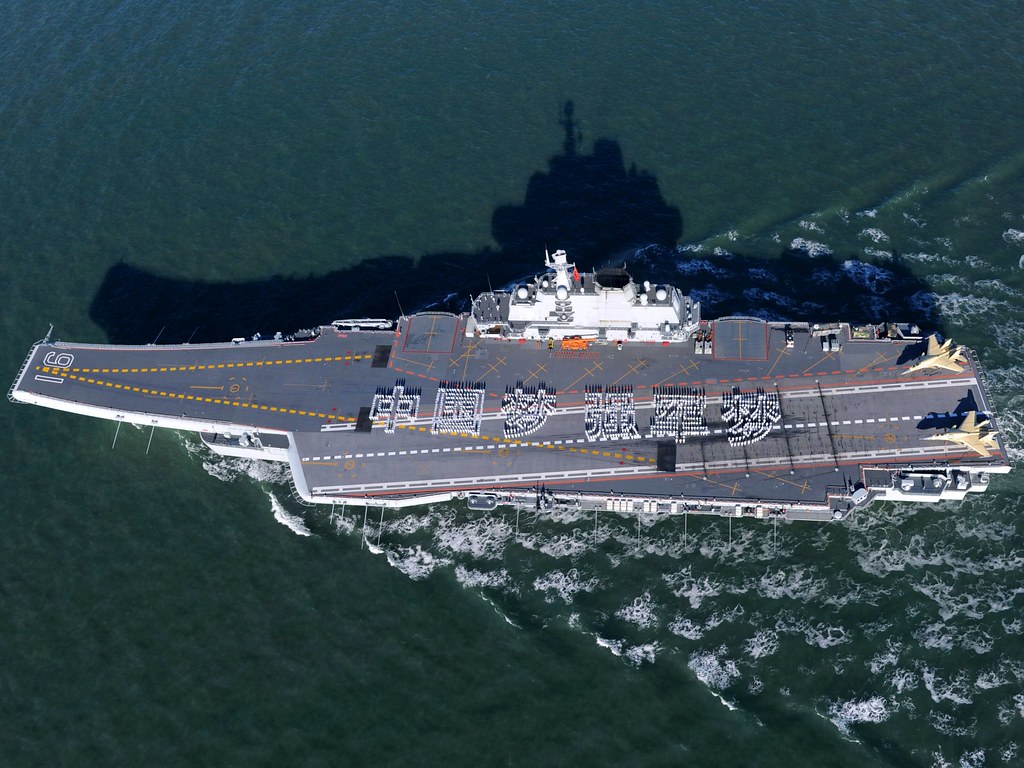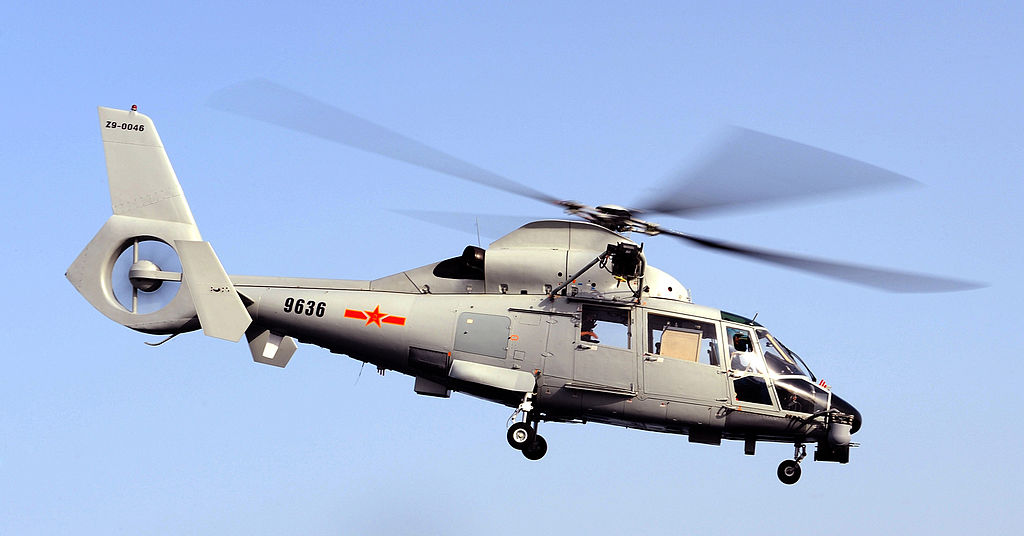TerraN_EmpirE
Tyrant King
Nyet comrade, not enough poop to get off the deck???? by the way, what is a poop deck?????
aft upper deck. Its a archaic term from the days of wooden ships and cloth sails. When Men were men and Land lubers were Avast!.
Nyet comrade, not enough poop to get off the deck???? by the way, what is a poop deck?????
The poop deck, as originally defined, was a deck that formed the roof of a cabin built on the stern superstructure of a ship. It was not called that because of English terminology about defecating. No, it comes from the French term for the stern of a ship, la poupe.Nyet comrade, not enough poop to get off the deck???? by the way, what is a poop deck?????
Above the upper deck, the highest continuous deck there was the quarter deck over about the last third of the ship and above that the poop deck. This was simplified in the early 17th century when the poop deck disappeared but the name poop remained to signify the area from where the ship was commanded. The earlier caracks were even more complex. Look at pictures of 16th century Spanish and Portuguese ships. I think that complexity resulted from the need to accommodate an enormous number of people as well as to try to be higher than another ship to make defense against that other ship easier.by the way, what is a poop deck?????

War is Boring said:In late January, Chinese Internet forums highlighted what appeared to be the latest addition to China’s burgeoning carrier air wing. Although conspicuously watermarked, the photo clearly showed a sub-hunting version of the Changhe Z-8 helicopter.
It’s not as glamorous as missile-toting Shenyang J-15 carrier fighters or as potentially important for future operations as a carrier-based airborne early warning platform. On the other hand, the continued expansion of the Liaoning’s air wing reveals just how serious China is about deploying genuine naval air power.
Beijing bought and totally overhauled the former Soviet navy carrier Varyag starting in the late 1990s and, in late 2012, re-commissioned her into People’s Liberation Army Navy service as Liaoning. The 60,000-ton-displacement flattop could carry 30 or more aircraft.
Official Chinese agencies reported the first take-offs and landings by J-15 prototypes on the flattop in November 2012. Since then, the Shenyang fighters have been busy conducting increasingly ambitious trials, most notably during Liaoning’s foray into the South China Sea in November 2013.
That provocative voyage came in the wake of Beijing’s declaration of an Air Defense Identification Zone over an area of the East China Sea. China is locked in heated territorial disputes with its neighbors in both seas.

Fighter factor
The J-15 Flying Shark has begun to flex its muscles in trials, offering hints about its role and capabilities. During a three-week voyage last September, J-15s took off and landed on the carrier with various heavy payloads.
Stores included PL-8 and PL-12 air-to-air missiles for the air superiority role, 500-kilogram dumb bombs for the strike role and the heavy YJ-83K anti-ship missile. In contrast, the Russian Sukhoi Su-33—from which the J-15 derives and which currently populates the Russian navy’s carrier air wing—is only capable of air-defense missions.
Russian-made “buddy” aerial refueling pods have also appeared on the Chinese fighter, meaning that it will have both the legs for long-range projection missions and be capable of carrier takeoffs with heavier weapons loads.
The J-15 is now in serial production in its Batch 01 guise. So what other fixed-wing aircraft and helicopters will join the fighter on Liaoning?
For starters, the single-seat J-15 has now been joined by the two-seat J-15S model. The tandem-seat J-15S first appeared back in 2012. It’s still unclear whether the J-15S is a trainer with a secondary combat capability, or if it’s a primarily a long-range bomber like the American F-15E.
It would be surprising if the J-15S doesn’t include at least some of the advanced indigenous avionics fitted to the land-based J-16, a Chinese version of the Russian Su-30MKK multi-role strike fighter that seems certain to have entered production earlier this year.
For now, at least, further carrier-based fighters remain strictly speculative. The dimensions of the Chengdu J-10—now in large-scale service as a land-based fighter with the air force and navy—are about right for carrier use. But beyond enthusiastic fan art, there is no evidence of Beijing modifying the J-10 for carrier use.
Meanwhile, analysts have surmised that the Shenyang J-31 stealth fighter—apparently a lightweight rival of the heavyweight Chengdu J-20—could eventually fly from carrier decks.
Of course, with Beijing having officially announced its intention to build at least two homemade carriers, the Chinese arms industry has every incentive to offer new naval aircraft. This could pave the way for a possible carrier-compatible version of the J-20. There are rumors that this sea-based stealth fighter is already under development at Chengdu.

Eyes in the Sky
There are at least three candidate airframes for the critical airborne early warning and control mission—the Russian-built Kamov Ka-31 helicopter, the indigenous Changhe Z-8YJ helo and a modification of the Harbin Y-7 transport plane, apparently designated JZY-01.
A helicopter AEW&C aircraft is a less complex engineering challenge than a fixed-wing model like the U.S. Navy’s E-2 Hawkeye. The U.K., Italy and Spain all operate basic radar helicopters aboard small carriers.
The Z-8YJ Black Bat is based on the Chinese-built Aérospatiale SA321 Super Frelon, a copy of a rotorcraft that France supplied to China in the 1970s. This is likely an interim platform pending the completion of a fixed-wing aircraft based on either the Y-7 or the more modern MA-60 twin-turboprop.
Indeed, before Liaoning even went to sea, mock-ups of both the Z-8 and J-15 were on deck for non-flying trials.
The Z-8YJ mounts its retractable radar on the rear ramp. The first series-production example appeared on Liaoning in February. Once the Z-8YJ and related new variants join the fleet, they will likely receive designations in the Z-18 series.

The Ka-31 represents an even lower-risk option, as it is already in navy service. Originally developed for the Russian carrier Admiral Kuznetsov, the Ka-31 has a phased-array radar antenna that lies flat under the belly when not deployed, before swinging down through 90 degrees in order to rotate.

Undersea Hunters
Intriguingly, China appears to be planning to use its carriers to hunt submarines, a capability most other navies have abandoned, owing to its complexity and the perceived reduction in the undersea threat.
Anti-sub ops would, of course, be important in a war with Taiwan or in a confrontation with Japan over the disputed islands in the East China and South China Seas. A carrier-based ASW force could also help secure Beijing’s ballistic missile submarines, based with the North China Sea Fleet at Qingdao.
While the Russian-supplied Kamov Ka-28PL, acquired together with the four Project 956/956EM Sovremenny-class destroyers, is the standard anti-submarine helicopter on larger Chinese surface combatants, Liaoning and her successors could embark a version of the heavyweight Z-8.
The ASW version of the Z-8 broke cover earlier this year. As expected, the helicopter has a 360-degree surveillance radar below the nose, observation windows in the fuselage and external weapons hard-points. There’s apparently also an electro-optical sensor.

Supporters
Carriers need search helicopters to rescue downed aircrew and overboard sailors. There are at least two ready-made options for China’s new “plane guard.” Beijing acquired a small number of Russian-made Kamov Ka-28PS co-axials along with the Ka-28PLs. But the limited number of Ka-28PSs suggests a version of the Chinese-made Harbin Z-9 is a more likely candidate.
A version of the Eurocopter AS365 Dauphin, the Z-9 already exists in navalized form. The standard version for search and rescue and ASW is the Z-9C, already noted aboard Liaoning, while the latest Z-9D is capable of carrying the YJ-9 anti-ship missile.
China has flown a new helicopter apparently modeled on the U.S. Blackhawk. This “Copy Hawk” could finally provide the Chinese armed forces with an indigenous helicopter in the medium weight class. Clearly, it has the potential to handle a range of maritime missions, much like the U.S. Navy’s Seahawk.
The same is true for the Z-8F, the latest development of the Z-8. Developed primarily for civilian use as the AC313, a Z-8F has already flown off Liaoning. In its initial guise, the carrier-based Z-8F is expected to perform logistic support and VIP transport.
Last but not least, there’s the Guizhou JL-9G, a dedicated carrier trainer. This two-seat jet includes all the required modifications for the role, including an arresting hook and beefed-up undercarriage.
To date, the aircraft has operated only from a simulated carrier deck on land, but as more carriers join the Chinese fleet, it could also go to sea. In its current guise, however, the JL-9G appears to lack engine power.

Order of Battle
In his recent analysis of Chinese naval aviation for Combat Aircraft Monthly, aerospace expert Andreas Rupprecht reports that Beijing’s sole carrier is based at Qingdao but is subordinate to navy headquarters. Liaoning is not under the jurisdiction of the North Sea Fleet. This “is consistent with previous reports stating that the ship is not intended for operational use, but rather as a training vessel to explore carrier operations,” Rupprecht writes.
The exact status of the fledgling carrier’s air wing remains a mystery. Rupprecht suggests that its most likely base is Huangdicun, home to a dedicated carrier-training facility complete with a ski-jump ramp and J-15 hangars sufficient for two regiments.
The air wing seems to be operating on a somewhat informal basis, with aircraft assigned from other units on an ad hoc basis—perhaps until the admirals make a firm decision about its configuration. The wing could adopt the name of the currently defunct 7th Naval Aviation Division.
In Rupprecht’s analysis, the future Chinese carrier air wing will deploy with two regiments each with 12 J-15 fighters. One rotary-wing unit will have four Z-18ASWs. Another will fly four Z-18YJs for airborne early warning, before these give way to two to four of the fixed-wing radar planes.
One mixed helicopter unit will comprise four Z-9s for plane guard, possibly complemented by the heavier Z-8S for long-range rescue—or even the Z-8JH for medical evacuation and combat search and rescue, plus examples of the Z-8F for logistic support and VIP transport. If the Z-8 is unavailable for ASW and AEW, the Ka-28 and Ka-31 could step in.
Jeff,
I think it is a decent article because they got the information from us.
And I object to equating serial production with batch production. These are different production concepts.
Back on topic.
The following is a very decent read:
So, this article suggests that the official air wing will be very close to what we have discussed:
24 x J-15 Naval Strike Fighters
04 x Z-18YJs AEW or Ka-31 Helicopters
04 x Z-18 ASW or Ka-28 ASW Helicopters
04 x Z-9 or Z-8S SAR Helicopters
02 x Z-8F COD/Logistics Helicopters
That would be a total of 38 aircraft.
The article is not perfect...but it is nonetheless very good.Jeff,
I think it is a decent article because they got the information from us.
And I object to equating serial production with batch production. These are different production concepts.
Jeff,
I think it is a decent article because they got the information from us.
And I object to equating serial production with batch production. These are different production concepts.
